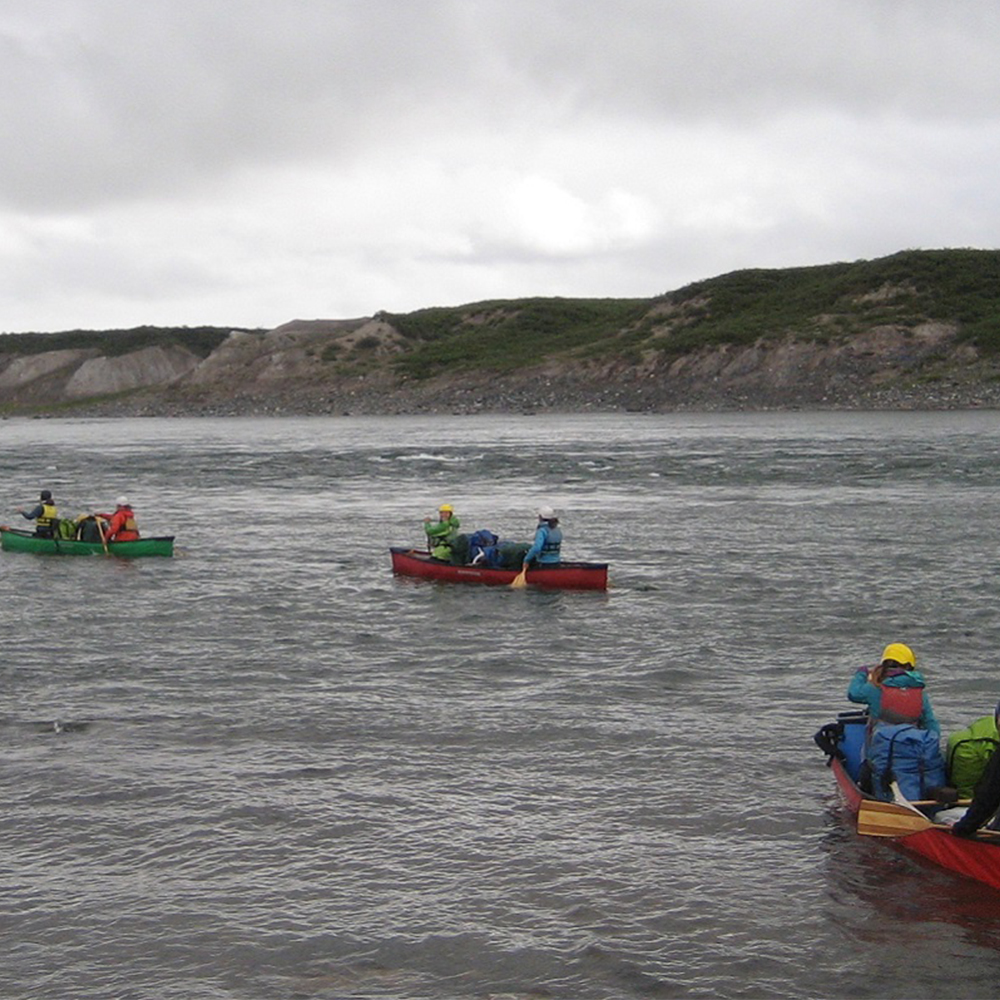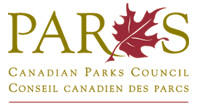About Us
About Nunavut Parks
Nunavut Parks are land areas that represent Nunavut’s unique past and present nature and culture.
Nunavut Parks are community supported protected areas and reflect what is important to Nunavummiut and are favourite places to go fishing and camping, berry picking, walking, or to relax and heal. These are places where we go with our families and want to share with visitors to Nunavut.
Nunavut Parks are essential to the quality of life for Nunavummiut. They are unique places in their cultural and natural heritage that inspire and sustain the spirit. The environmental significance and cultural value of parks merit humankind’s special care.

About The Organization
Nunavut’s Parks and Special Places Division celebrates, promotes and protects our cultural and natural sites for visitors and residents.
The Nunavut Parks and Special Places Division is responsible for planning, establishment, management, operation and promotion of Mirnguiqsirviit, Nunavut’s territorial parks and special places.
Nunavut’s parks and special places are important destinations and attractions for Nunavummiut and our visitors. They showcase our rich natural and cultural heritage locally, regionally, nationally and internationally; strengthen and support local Inuit cultures and communities through promotion and development of land-based activities; and stimulate pursuit of traditional activities in the spirit of Inuit Qaujimajatuqangit (IQ).
Under the Umbrella Inuit Impact and Benefits Agreement (IIBA) and the Nunavut Agreement (NA), territorial parks and special places are planned and managed jointly, on the basis of sound and comprehensive resource information, IQ, local and scientific knowledge, and current technological and geospatial information.
Vision
Our territorial parks and special places unite us all as Nunavummiut. Each park is unique, shaped by both culture and landscape. They celebrate the infinite beauty and diversity of our territory, and provide a haven, not only for plants and animals, but also for Mirnguiqsirviit - the human spirit. It is our shared responsibility to preserve them for generations to come. Parks and special places inspire all Nunavummiut as living reflections of Nunavut’s extraordinary environmental and cultural diversity. They enrich our education, enhance our health, and provide recreational enjoyment and other benefits. Perhaps most important, they nurture values that lie at the heart of Inuit and Nunavut culture; a deep respect for the land and its conservation, and a profound appreciation for the unbreakable bond between landscape and culture.
Our vision is a Nunavut in which these priceless resources, spaces and experiences are protected through careful, thoughtful management, and through leadership that reflects Nunavut’s real cultural strengths and values.
Mission
Territorial parks reflect Nunavut’s environmental and cultural diversity, ensuring that Nunavummiut and visitors for generations to come will be able to see and learn about natural and cultural heritage. Planning and management allows the GN to recognize places and resources that require protection and conservation action in the face of development pressures, climate change, and other threats to our natural and cultural resources of significance. Creating places and opportunities to enjoy our heritage can amplify experiences that enrich lives and nurture a respect for landscape, conservation, culture and heritage. Proper management of those experiences will safeguard our environment and heritage.
Goals
Territorial Parks protect and conserve representative examples of the full range of Nunavut’s natural and cultural landscapes for future generations. Joint planning and management will use the best available local Inuit Qaujimajatuqangit and scientific knowledge to contribute to the long‑term sustainability of Nunavut’s ecosystems, cultural landscapes, historical and pre‑historical places, and the overall health and wellness of our population. Our challenge is to identify and conserve what is timeless while reflecting the current needs of Nunavummiut.
Nunavummiut and visitors use Territorial Parks to create meaningful nature and culture based experiences and memories. Resident and visitor experiences are tied to their interactions with a park as places to relax, discover, and learn. To facilitate positive experiences, parks are maintained and
operated to the highest standards; park programs are offered by trained and knowledgeable staff and local guides; and trip planning information is in place. The self‑reliance and the cultural and social well‑being of Inuit is enhanced through territorial park establishment, planning, management and operation.
Inuit have a unique relationship with Nunavut’s landscape that is ecological, spiritual and social in nature, and they have an accumulated body of Inuit Qaujimajatuqangit about our territorial parks. Through CJPMCs, territorial parks engage communities in decision making, creating opportunities for Inuit to benefit from parks‑related tourism, economic development, education, and employment. Heritage appreciation through our parks offers exceptional learning opportunities for Nunavummiut and visitors to understand the history, culture, landscapes and resources of Nunavut. By connecting generations to the land and Inuit culture, parks promote life‑long learning, increase understanding of and support for parks, and encourage Nunavummiut to place a higher value on conserving Nunavut’s cultural and natural resources.
Principles
Nunavut Joint, Planning and Management Committee
Qavavauq Issuqangituq
Luke Suluk
Darrell Ohokannoak
Pacome Lloyd
Simon Qingngatuk
Linda Vaillancourt
David Monteith
Vacancy
Linda Vaillancourt
Avatittinnik Kamatsiarniq: respect and care for the land, animals and the environment.
- Inuit Qaujimajatuqangit, or the traditional knowledge of Inuit, is necessary for responsible decision-making regarding lands, waters and resources. Inuit Qaujimajatuqangit of a park’s physical features, ecology, wildlife, and Inuit heritage and culture will inform planning,
management and decision making. - Integrity of our Natural and Cultural Resources – Maintaining the integrity of our natural and cultural resources and landscapes take precedence in planning, managing and operating territorial parks. The archaeological and cultural heritage of Inuit will be preserved and promoted.
- Human-environment relationship – Inuit and the environment are inseparable. Protection and presentation of natural and cultural heritage must take account of the close relationship between people, wildlife and landscapes.
Aajiiqatigiinniq: decision making through discussion and consensus.
- Joint Management and Planning – Nunavut’s Territorial Parks are planned and managed jointly with full support of residents and communities. Inuit rights, as well as landscape and resource values in keeping with the NA and IIBA, are recognized throughout the park establishment, planning and management process.
Qanuqtuurniq: being innovative and resourceful.
- Research and Knowledge – The identification, planning, establishment and management of parks are based on open, systematic, rigorous, cooperative and knowledge-based practices. We use the best available knowledge, supported by Inuit Qaujimajatuqangit and scientific research, and support adaptive management approaches.
Inuuqatigiitsiarniq: respecting others, relationships and caring for people.
- Involvement – Involving Inuit organizations, communities, residents and other stakeholders is the cornerstone of policy, planning, management and operations practices to help ensure sound decision-making, build public understanding, and provide opportunities for everyone to contribute their knowledge, expertise and suggestions.
Piliriqatigiinniq/Ikajuqtigiinniq: working together for a common cause.
- Collaboration – Planning and managing territorial parks is undertaken jointly with all stakeholders, which is essential if our parks are to continue to contribute to Nunavut’s objectives for sustainability, education, tourism and health; and especially if conservation and development objectives are to be balanced. Joint planning and management is also essential to avoid or mitigate any negative impacts associated with parks.
Pijitsirniq: serving and providing for family and/or community.
- Balance – Territorial Parks contribute to Nunavut’s economy through tourism and park-related economic development without compromising the protection of our cultural and natural heritage.
Tunnganarniq: fostering good spirit by being open, welcoming and inclusive.
- Integrity and Accountability – Decisions related to park establishment, planning, management and operations are made using all available information to ensure informed decisions are made in a fair, transparent and accountable manner. The use of Inuktitut in territorial parks is a basis of Heritage Appreciation and interpretive programs. All Territorial Park activities are accountable to these principles, and implementation of legislation, NA and IIBA obligations, and other related policy.
Inuit Associations and Organizations
Parks and Protected Areas Organizations

Canadian Parks Council
Canada’s national, provincial and territorial park agencies work together, through the Canadian Parks Council, to ensure that Canadians can continue to be proud of the role parks and protected areas play in preserving our country’s natural capital.

Canadian Heritage Rivers System
The Canadian Heritage Rivers System (CHRS) is Canada’s national river conservation program, giving national recognition to Canada’s outstanding rivers and encouraging their long-term management to conserve their natural, cultural and recreational values for the benefit and enjoyment of Canadians, now and in the future.

Trans Canada Trail
The Trans Canada Trail will promote and assist in the development and use of the cross country Trail – The Great Trail – by supporting success at the local level in the creation of this national network.

Tread Lightly!
Tread Lightly! and its partners lead a national initiative to protect and enhance recreation access and opportunities by promoting outdoor ethics to heighten individuals’ sense of good stewardship.
